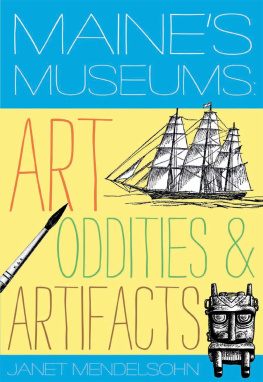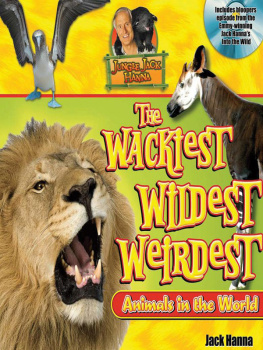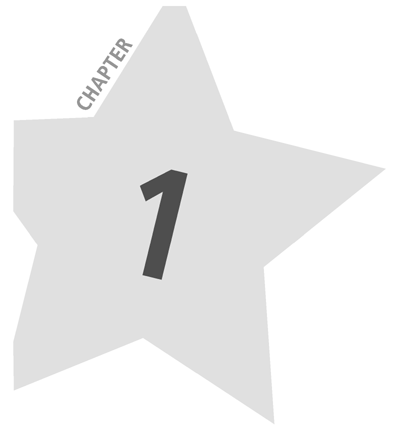about the authors
Bruce Gellerman hosts Public Radio Internationals environmental program Living on Earth and is founder of SoundTreks LLC, which creates location-aware content for the mobile media market.
Bruce was a science reporter at NPR and Senior Washington Correspondent for the Center for Investigative Journalism. His work has appeared in the New York Times, the Boston Globe, BBC-Radio, and 60 Minutes. He has received more than 40 national awards for journalism. Bruce lives in Watertown, Massachusetts, with his wife, Yulia, and their children Andre and Anya.
Journalist Erik Shermans writing and photographs have appeared in many national publications, and he is the author of The Complete Idiots Guide to Pizza and Panini, The Complete Idiots Guide to Canon EOS Digital Cameras, and Everything Leadership.
acknowledgments
As powerful as the Internet is in collecting the flotsam and jetsam of life, curious people are still the best sources for Massachusetts minutiae, and we are indebted to many for sharing their knowledge and digging deep when we set them to task.
To Deborah Douglas, curator of science and technology at the MIT Museum, many thanks for introducing us to Kismet, the worlds most emotive robot. Craig Le Moult and Siobhan Houton of Tufts University helped show us which way was up regarding the antigravity monument and the tale and tail of Jumbo, the elephant. Professor Gordon Prichett from Babson College can actually tell you what an apple from Newtons tree tastes like, and we were blessed to make the acquaintance of Diane Shephard, archivist at the Lynn Museum, who introduced us to the God Machine.
Thanks, too, to Stephan Nonack, head of Reader Services at the Boston Athenaeum, who gave us the lowdown on the skin book, and to Jennifer Spencer for opening up her skinny house. Roberta Zonghi, the keeper of rare books and manuscripts at the Boston Public Library, was a font of information about things curious about Boston, as was the entire staff at the Boston Historical Society. And the Worcester Historical Society is second to none when it comes to being friendly and helpful.
Heidi Wellman, former owner of the former Chandlers General Store in Colrain, helped by providing information on Old Glory and getting us the inside scoop on the Arthur B. Smith covered bridge. Kate Wellspring, collections manager at Amherst Colleges Pratt Museum, offered a firm footing on dinosaur tracks, as did Kornell Nash.
Jarvis Rockwell was unfailingly generous with his time as we asked about his toy collection. And a Global Positioning System enthusiast, with the handle Khao Mun Gai when he indulges in the sport of geo-caching, led us to the Forty-Second Parallel marker.
David Olson and Susan Abele at the Newton History Museum at the Jackson Homestead always took our requests for information with a straight face, whether we were inquiring about Fig Newtons or worm farms. Chet Kennedy, founder of the Public Health Museum, is a man with a mission and a missionary zeal; and Rev. Steven Ayers, vicar of the Old North Church, was always ready with a quip and a quote about colonial Boston.
Ellen Berlin of the Boston Medical Center set us straight on the fate of Jack the Duck. Charles Ball, the president of World Smile Day, was a delight to work with. And well always remember Tom Smith from Woburn City Hall for remembering the Maine cowl and telling us about it.
If you want to know about the smallest church in the world, the Hudson Public Library and Vic Petkauskos are the place to go. Bert Cohen knows more about marbles than any person in the universe, and if you are really into bad art, the person to see is Louise Sacco, curator of the Museum of Bad Art. Deborah Henson-Conant has a taste for burnt food and curates her crispy critters and tofu dogs with aplomb. Dr. Stephen Gould is one of those rare people who actually stops and reads roadside monuments. Thanks to him for pointing out where Jingle Bells was written.
And many thanks to Marc Abrahams, editor and founder of the Annals of Improbable Research, for thinking we were curious enough, or just crazy enough, to write this book. We hope weve proven you correct on both counts.
Greater Boston
You wouldnt getan argument from anyone in love with Boston politics: The Boston State House is, as Oliver Wendell Holmes wrote, the hub of the solar system. And what an ornate hub it is, topped with a gilded pine conethe symbol of Maine, once a part of the Commonwealthand decorated with the Sacred Cod and the Holy Mackerel, giving a particular decorative air to its legislative chambers.
Interested in outsizedand outsidecuriosities? How about the narrowest house in Boston, 10 feet, 5 inches wide, in Bostons North End? Or the 40-foot-tall Hood Milk Bottle near the Boston Childrens Museum? Or a giant tea kettle (this is the city that hosted the countrys most famous tea party, after all)? And dont forget to Make Way for Ducklings and duck on over to Bostons Public Garden to view the sculpture celebrating that well-known childrens book.
Most fabulous of all might be the Isabella Stewart Gardner Museum, housed in a Venetian palace with courtyard. Mrs. Gardners collection includes paintings, sculptures, tapestries, and rare books, more an art attic than a museum. See those empty frames on the wall? They once contained some of the thirteen priceless works stolen in a daring St. Patricks Day robbery in 1990.
Boston is home to the Old North Church and the Church of Baseball, Fenway Park, Major League Baseballs crown jewel. Come on Patriots Day in April for morning baseball. Feel free to admire the Pesky Pole, the Green Monster, and Manny Being Manny... but leave that Yankees jersey at home.
The Hub of the Universe
Boston
Bostonians are a self-centered lot, and why not? After all, the citys immodest nickname is The Hub, as in the hub of the universe. The phrase is actually derived from something Oliver Wendell Holmes wrote in The Autocrat of the Breakfast-Table about the capitol building:
Boston State-house is the hub of the solar system. You coud nt [sic] pry that out of a Boston man if you had the tire of all creation straightened out for a crow-bar.
Since Holmes wrote this whimsical essay in 1858, the so-called center of the universe has moved a bit. Youll now find it near Filenes Basement on a spot marked with a bronze plaque about 15 feet from the stores Washington Street entrance. Perhaps fitting for its top banana status, in order to see the center of the universe, you might have to move a bunch of bananas or two... and perhaps some onions and a crate of oranges. The plaque, marking the hub of the universe, is now in the center of a fruit market at 426 Washington Street.
Fighting Joe Hooker








